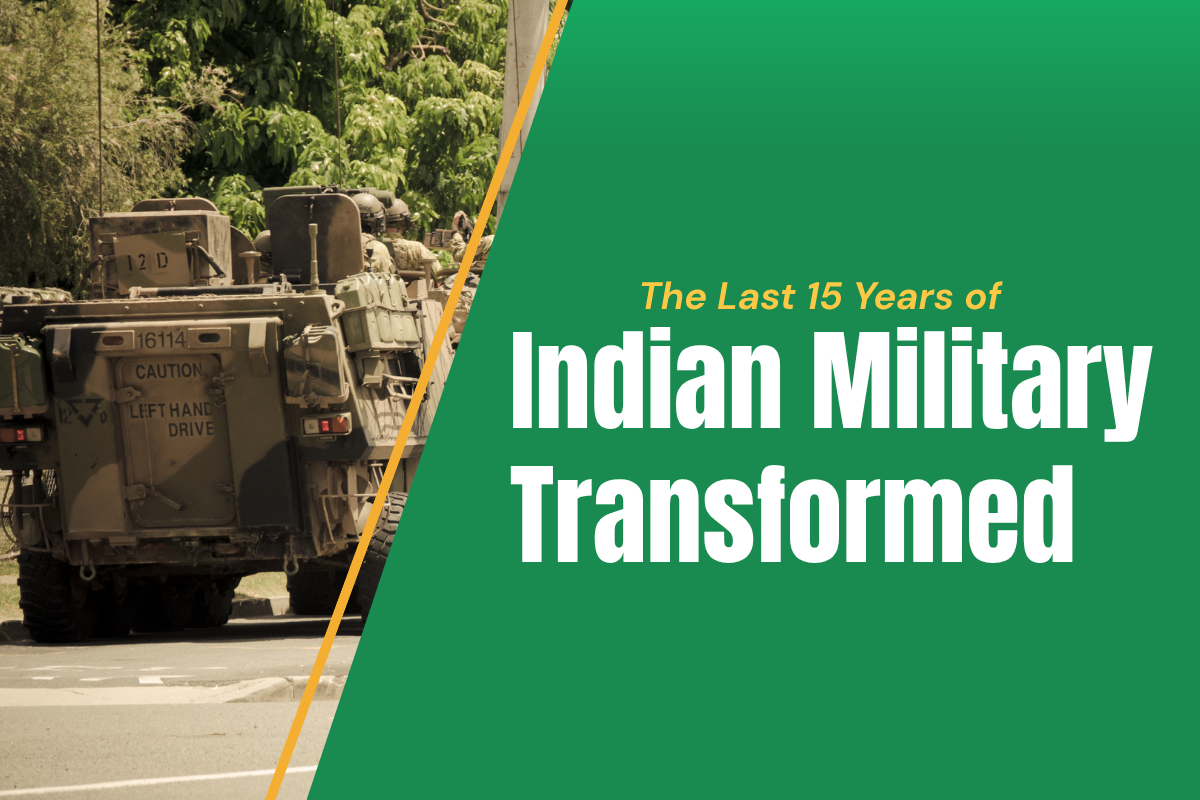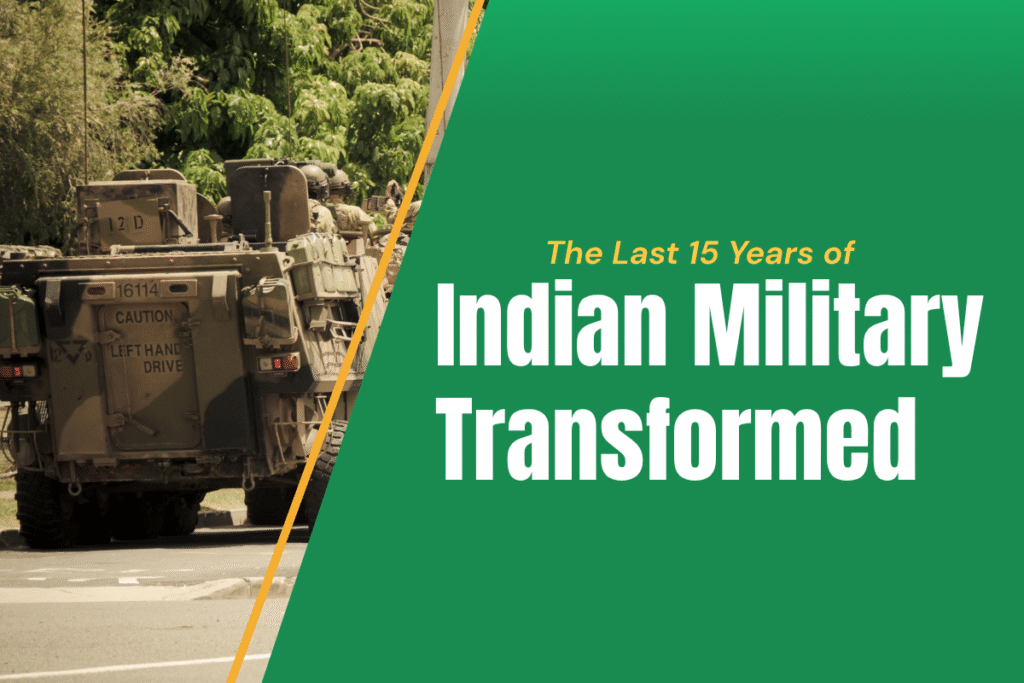
How the Indian Military Transformed in the Last 15 Years
In the past 15 years, the Indian Armed Forces have undergone a major transformation — technologically, strategically, and structurally. This evolution is not only about acquiring advanced weapons but also about building indigenous capabilities, enhancing jointness, and strengthening defence diplomacy.
For UPSC aspirants, understanding this transformation is essential to connect defence modernization, foreign policy, and technology integration — topics often covered in GS Paper II and III.
To strengthen your understanding, explore Current Affairs updates on defence reforms and national security.
1. Modernization Through Technology and Innovation
India’s defence modernization has accelerated through the integration of cutting-edge technologies such as:
AI and Robotics in surveillance and weapon systems.
Quantum communication and cybersecurity frameworks.
Drones, UAVs, and autonomous platforms for border monitoring and logistics.
The induction of Rafale jets, INS Vikrant, Arjun Mk-1A tanks, and Pinaka rocket systems.
The focus has shifted from imports to indigenization under ‘Atmanirbhar Bharat’. The Defence Acquisition Procedure (DAP 2020) promotes Make in India and start-up participation in defence R&D.
For detailed material on this topic, check Study Material at CivilsTap.
2. Strengthening Defence Infrastructure and Border Capabilities
The Indian military has significantly upgraded its border infrastructure with all-weather roads, bridges, and tunnels such as:
Atal Tunnel in Himachal Pradesh.
Sela Tunnel in Arunachal Pradesh.
Nechiphu Tunnel and enhanced logistics along LAC.
These developments have improved troop mobility and logistics readiness, especially in high-altitude terrains.
Defence corridors in Uttar Pradesh and Tamil Nadu are boosting aerospace and defence manufacturing.
You can test your knowledge on such topics through the Daily Quiz section.
3. Jointness and Structural Reforms
One of the biggest structural changes has been the creation of the Chief of Defence Staff (CDS) in 2020 — a landmark step towards integrated theatre commands.
Key initiatives include:
Integration of the three services (Army, Navy, Air Force) for joint operations.
Formation of Theatre Commands for unified military strategy.
The launch of Agnipath Scheme (2022) to bring young talent into the armed forces and maintain a balanced defence budget.
Such reforms reflect a shift from personnel-heavy forces to technology-driven and agile units.
For aspirants preparing for topics like governance and policy reforms, CivilsTap’s Courses provide structured coverage.
4. Expanding Naval and Aerospace Power
India’s maritime and air capabilities have expanded significantly, strengthening its position as a regional power:
INS Vikrant (2022) made India one of the few nations to design and build an indigenous aircraft carrier.
INS Arihant and the nuclear triad enhance strategic deterrence.
Tejas LCA, HAL Prachand, and DRDO’s missile systems showcase indigenous air power.
Expansion of satellite surveillance and space-based assets through ISRO’s defence applications.
Such capabilities play a vital role in maintaining regional stability and India’s maritime dominance in the Indo-Pacific region.
5. Cyber, Space, and Artificial Intelligence Integration
The creation of Defence Cyber Agency, Defence Space Agency, and Armed Forces Special Operations Division (AFSOD) symbolizes India’s readiness for future warfare.
India’s investment in AI-based decision systems, satellite imaging, and data-driven intelligence is bridging the gap between traditional and modern warfare.
Explore related defence tech innovations in Current Affairs and Study Material.
6. Defence Diplomacy and Global Partnerships
In the last 15 years, India has elevated its defence diplomacy by:
Participating in global exercises like Malabar, Yudh Abhyas, Garuda, and Varuna.
Strengthening strategic partnerships with the USA, France, Japan, and Australia (Quad).
Becoming a major arms exporter, supplying defence equipment to nations in Asia and Africa.
This transformation signifies India’s growing role as a security provider in the Indo-Pacific.
Points To Be Noted
India’s military evolution in the last 15 years represents a paradigm shift from being import-dependent to innovation-driven and self-reliant. The journey blends technological advancement, structural reform, and strategic vision — aligning with India’s goal of becoming a global defence leader.
Link defence modernization with internal security, science & tech, and foreign policy in your GS answers. Use facts, government schemes, and reforms like Agnipath, CDS, Theatre Commands, and Make in India to make your answers stand out.
Latest Blogs
Ask your Query
Browse By Category
- Daily Current Affairs (4)
- EPFO (4)
- HP Allied (4)
- HPAS/HAS (12)
- IAS (15)
- Monthly Current Affairs (1)
- PCS (15)
- Uncategorized (1)
- UPSC (14)
- Weekly Current Affairs (2)
- Yearly Current Affairs (5)

Archives
- October 2025 (3)
- September 2025 (10)
- August 2025 (10)
- July 2025 (6)

 October 10, 2025
October 10, 2025






Leave Comment